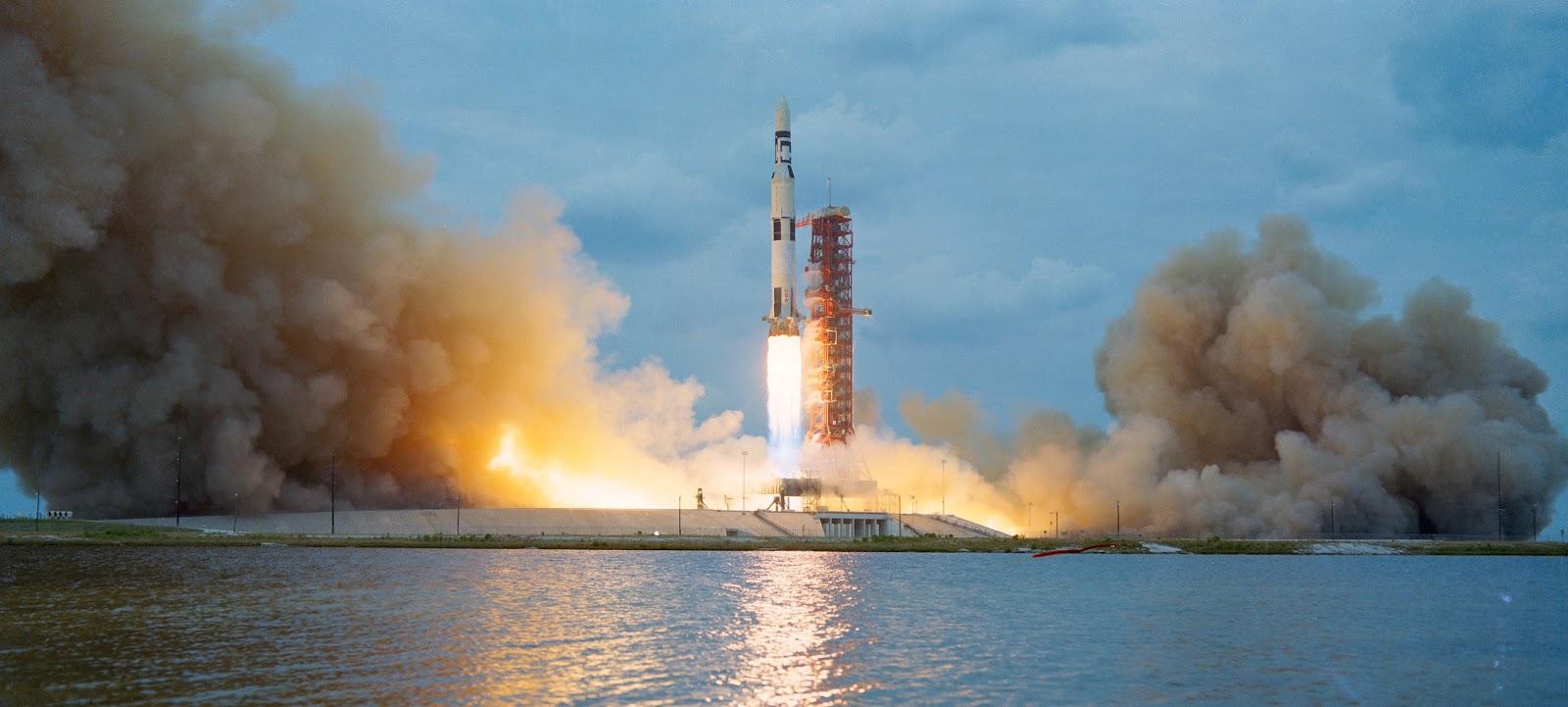45 years ago today, the final Saturn V to fly launched from Launch Complex 39A at Kennedy Space Center, carrying on it the first (and only) space station for the United States: Skylab (often stylized as “SkyLab”)
I absolutely love Skylab. The station itself, how it came to be, and the dramatic story of its launch and rescue are amazing to me, but sadly are often forgotten, lost to history since it falls in between the Apollo Moon landings and the Space Shuttle program.

This is somewhat ironic given the very environment that spawned Skylab as the station actually flew. With the budget cuts the government gave NASA following the success of Apollo 11, the agency was left with a good bit of surplus hardware: several Apollo Command / Service modules, Saturn IB rockets, a couple of Saturn V launch vehicles, and the infrastructure for launching these vehicles – the Saturn IB hardware having been “mothballed” in the late 60’s after the Apollo program shifted operations from LC-37 and LC-34 to LC-39A abd LC-39B.
Through the 60’s an idea was proposed – convert the S-IVB upper stage of a Saturn IB or a Saturn V rocket into a space station. The original proposals included using a specially modified stage to be used as an active part of a launch vehicle — a normal rocket stage — and then converted into a functioning orbital laboratory. A “Wet Workshop” plan, where computers, equipment, solar panels and the like would all be added into the used and now empty rocket stage. With the cancellation of later Apollo missions 18-20, resources were freed up to build the complete station on the ground and launch it into orbit on a Saturn V — the “Dry Workshop” approach.

A S-IVB stage from an unused Saturn IB launch vehicle would be converted into the orbital workshop, now known as Skylab. The 1st and 2nd stages of the Saturn V launch vehicle, the S-1C and the S-II, would be normal, save for changes to the S-II stage to make it the “terminal” (final) stage. Skylab would occupy the space normally used for the active S-IVB stage. On a normal Apollo mission, this stage would be fully fueled, and also carry the complete Apollo CSM/LM stack, ready for it’s mission to the Moon.
All this equipment and fuel weighs quite a bit -253,000 pounds (115,000 kg) for the fully fueled S-IVB alone, but Skylab was to be launched, of course, empty beyond the equipment it carried inside and externally, weighing only around 170,000 lbs (77,000 kg). This weight difference would be enough for the Saturn V 1st and 2nd Stages, with some slight modifications, to be able to launch the station into orbit.

To minimize changes to the Saturn V, Skylab actually still carried the Instrument Unit, normally located on the S-IVB stage, in its same position on the Orbital Workshop. This configuration of Saturn V was actually somewhat similar to a proposed version called INT-21, which would be used as a heavy cargo carrier had Saturn V production and usage continued. Instead, of course, the Shuttle would be the successor to Apollo.
By May 1973, Skylab was on Pad 39A ready and waiting. It carried 2 main solar “wings” to deliver power, as well as a “windmill” solar panel configuration on the Apollo Telescope Mount, a module originally planned as its own Lunar Module based lab, instead mounted to the “top” of Skylab, armed with equipment to study the Sun.
24 hours after launch, the 1st crew was planned to launch on a Saturn IB from LC-39B. One of the Saturn V launch towers was converted to accommodate Saturn IB launch vehicles, to ferry crews to and from the station. This launch wouldn’t happen for nearly 2 weeks after the launch of the Skylab space station itself, and its goals would be slightly altered.

At 12:30PM Eastern time on May 14th, 1973, Skylab lifted off the pad. The launch seemed well, as Skylab flew into a low bank of clouds, obscuring views of the stations climb to orbit.
At 63 seconds into flight, telemetry showed something strange had happened – the vehicle was performing fine, but something had gone wrong. It would later be learned just how bad the situation was. During the climb to orbit, a flaw in the design of the Orbital Workshop caused the micro-meteor shield – the black bulk of the station body) to rip off, taking with it one solar wing, jamming another, and hitting the S-II / S-IC interstage in such a way as to cause it to remain attached to the upper stage. This trapped some of the exhaust gasses and heat from the S-II up by the engines and the lower part of the stage, heating up and weakening the metal to a point where it nearly failed!
Amazingly, the S-II survived, and Skylab made it to orbit, albeit severely damaged. Engineers back at Mission Control quickly realized the space station was starved for power, and that temperatures were excessively high in the station. Based on the data, engineers figured out what was probably wrong with the station, and set to work planning a way to fix the problems. This was the cause of the delays in launching Skylab 2, and this is a subject we will cover on the May 25th.
For now, for what it is, the launch of Skylab, America’s first Space Station. We have not one, but three videos here today. Enjoy, as always.
https://en.wikipedia.org/wiki/Skylab
https://www.youtube.com/watch?v=e2fesWyxiw4
https://www.youtube.com/watch?v=JzCXYd2v3xE
